Khe Sanh

Khe Sanh is a town in the mountainous region of Quang Tri Province, along the Asian Highway (AH). During the Vietnam War, it became a historic battleground known for its fierce battles. Today, remnants of the war can still be found in Khe Sanh, such as Lao Bao Prison and Ta Con Airfield.
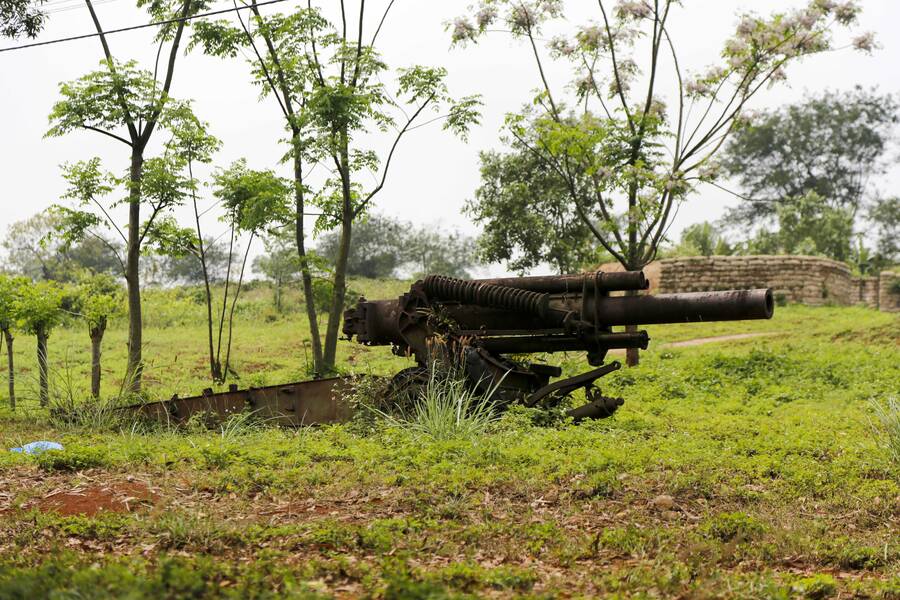
A wartime cannon remnant in the town. Photo: Vietnam War Travel
Here, visitors can breathe in the fresh mountain air, enjoy local specialties, and experience many other unique activities. Many travelers have described the town as the "Da Lat of Quang Tri." Let Asia King Travel introduce you to more about Khe Sanh through this article.
Khe Sanh is located in the center of Huong Hoa District, a border district of Quang Tri Province. The city is only 20 kilometers away from Laos, which is closer than the provincial city of Dong Hoi. To get there from Hanoi, you will have to travel more than 600 kilometers, while from Hue it will only be 140 kilometers. So you should choose a coach to travel in the most convenient way.
There is currently no airport available in Quang Tri, so after arriving in Vietnam, you need to travel by road along National Highway 1A to Dong Ha City. In the north of the city, turn onto National Highway 9 towards Laos. Follow this highway for about 65 kilometers and you will reach Khe Sanh.
Suggested for you: Vietnam Veteran Tours 17 days: History Insights
During the Vietnam War, Khe Sanh held a strategic position, controlling both the Ho Chi Minh Trail and the border area. Since this, the US military established a Combat Base there. In 1965, the base became the largest defense point on Route 9 (National Highway 9). In 1968, the North Vietnamese Army decided to launch an offensive to eliminate this "thorn" in the trail to the South.
The first phase took place on January 20th. The Vietnam People's Army besieged and attacked the strongholds around Khe Sanh. During this period, the Liberation Army organized diversionary attacks to attract the attention of the US, causing the US military to deploy more forces here. Because of this strategy, other cities were liberated in the Tet Offensive 1968 campaign.
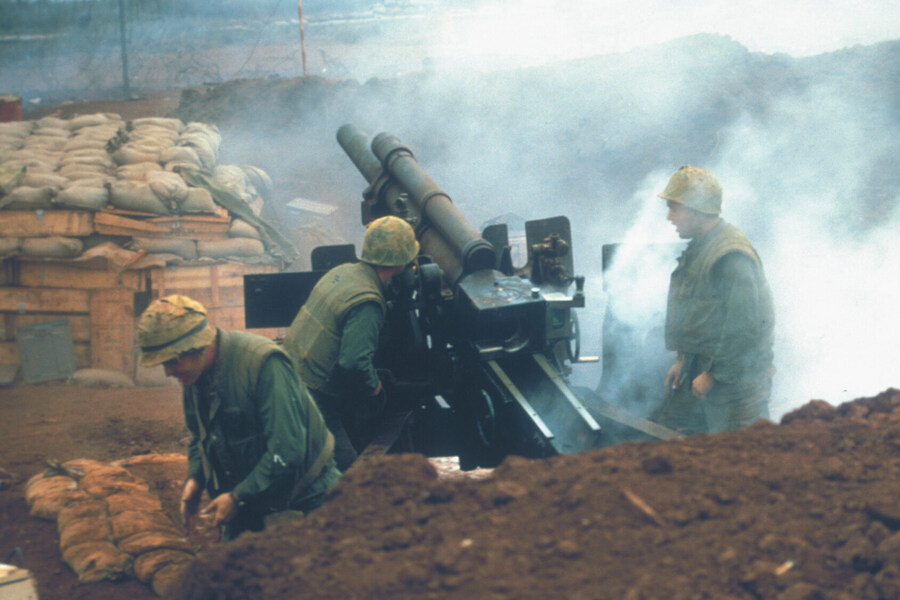
U.S. Marines during the siege of Khe Sanh, February 14, 1968. Photo: Warfare History Network
To break the siege, the U.S. launched a massive air campaign, deploying hundreds of B-52 bombers and F-4 Phantoms, dropping tons of bombs around the area in hopes of cutting off the supply routes of the Liberation Army. Despite the heavy bombardment, the North Vietnamese Army held their ground.
Facing the risk of Khe Sanh becoming a "second Dien Bien Phu," the U.S. launched Operation "Pegasus" on April 1 to relieve the pressure. Multiple military branches were mobilized to advance into the base. By April 6, they declared the siege broken and claimed a successful campaign. However, they eventually abandoned the base, deeming it no longer strategically important. In the end, the North Vietnamese Army took full control.
The first tourist attraction you should visit is the Khe Sanh Stupa. This monument was built to commemorate the fierce battle of 1968. The stupa features a stone plaque engraved with the names of Vietnamese soldiers who sacrificed their lives in the war, creating a solemn and commemorative atmosphere. You can also find historical documents detailing the battle.
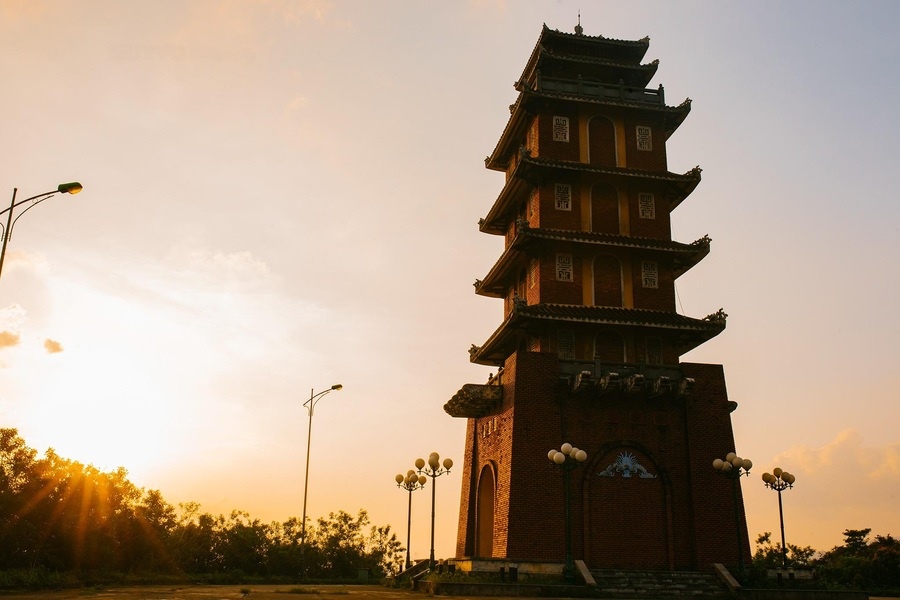
The Stupa in the sunset. Photo: Huy Vo Photography
Along the Ho Chi Minh Trail, wild sunflowers bloom in full glory on both sides of the road, captivating travelers and making them stop to admire the view and take check-in photos. The blossoms shine with a radiant golden hue, like little suns. If you drive fast, it feels like you're racing past a golden silk ribbon lining the road. But if you slow down, you’ll lost in a sea of flowers.
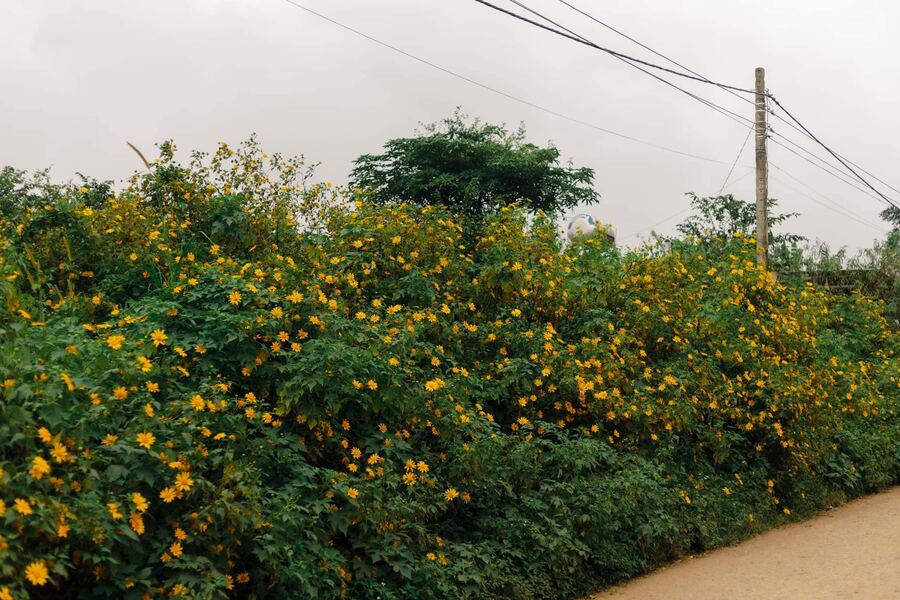
Wild sunflowers still bloom brightly at the end of the flower season. Photo: Ha Le
Heading 10 kilometers west past the wild sunflower road, you'll find yourself at the foot of Cu Vo Peak. The road up is a real challenge for both cars and motorbikes. But once you reach the top, the breathtaking, dreamlike scenery makes it all worth it.
From above, you can take in the panorama of the immense Rao Quan hydropower reservoir. Closer to you, towering wind turbines spin endlessly, day and night. On clear days, you might even capture stunning, once-in-a-lifetime photos with the clouds.

A completely peaceful place, with only the wind, nature, and you. Photo: Travellive
Grown on the historic red soil of a once-fierce battlefield, Khe Sanh Arabica coffee has a distinct and easily recognizable flavor. It has a bold intensity and a strong acidity, perfect for those who enjoy a powerful coffee experience.
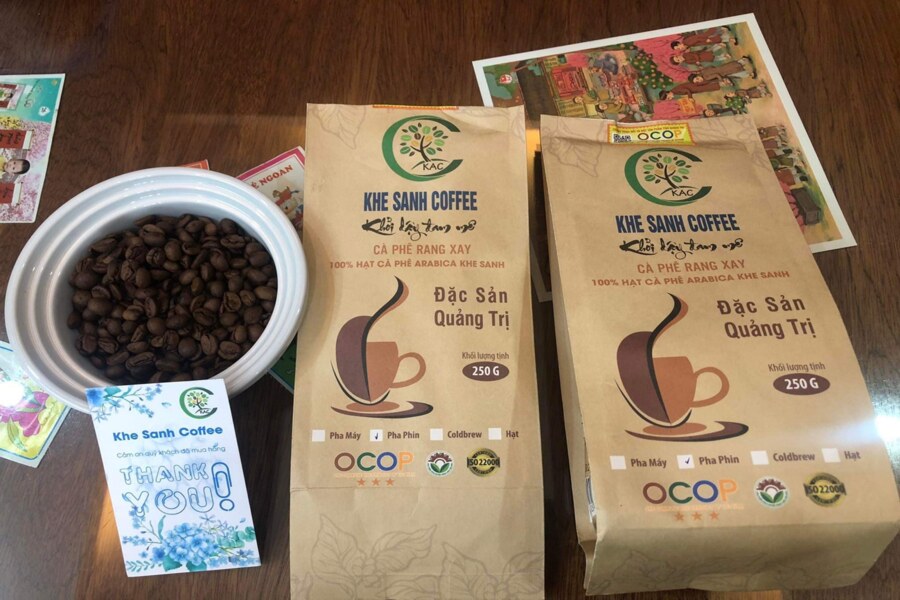
Khe Sanh coffee is gradually gaining recognition for its distinctive flavor. Photo: Review Chat / Tinhte.vn
This high acidity comes from the significant temperature difference between day and night, which increases the acid content in the beans. The aftertaste begins with a bright acidity, followed by a very light astringency mixed with a hint of smooth chocolate-like bitterness, and finishes with a gentle, lingering sweetness. Besides its original flavor, the coffee also carries fruity aromas such as orange, plum, and apple.
Quang Tri still bears the scars of war, the hardships of natural disasters and floods, and the harsh dryness of the Lao winds and scorching sun. Yet, from all of this, a land has been reborn - one filled with the poetic beauty bestowed by Mother Nature: the mountain town of Khe Sanh. Contact Asia King Travel, and let us help you explore this land of history and future.
Suggested for you: Center Vietnam Tour 10 days: Hidden Gems of Central Part